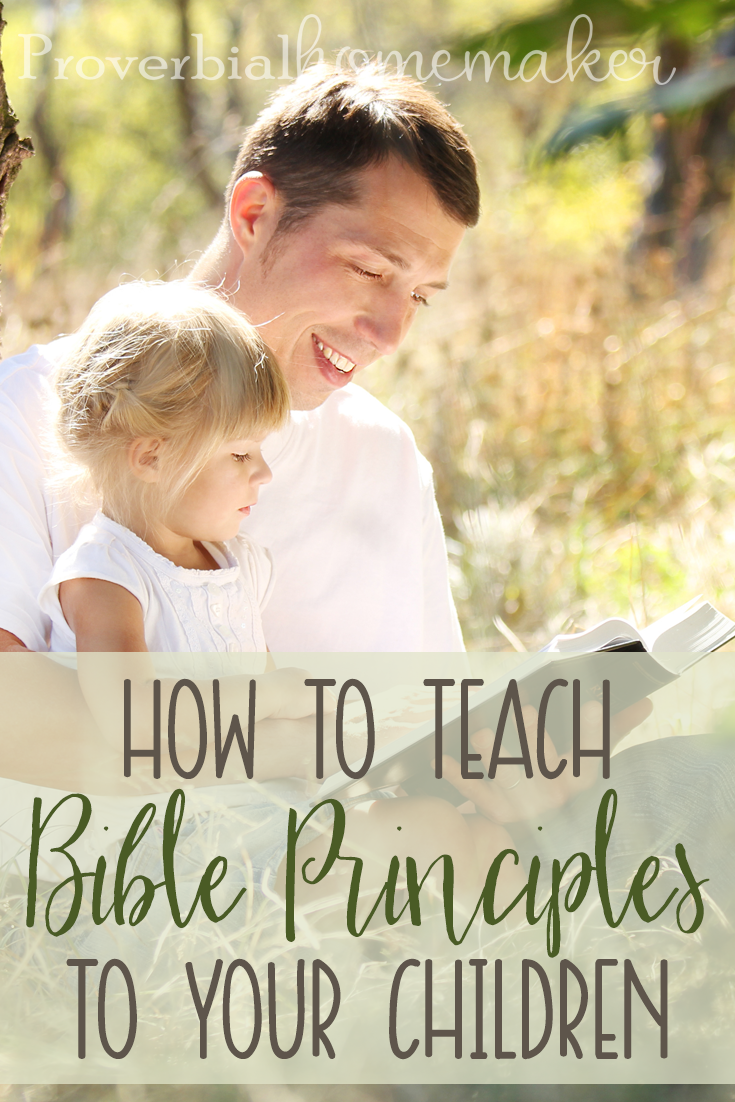What an amazing calling to homeschool your kids. And I believe that as you travel along this journey, you want to know God and make Him known to your children. Often times, parents wonder how to do that. For instance, is it a matter of teaching with a Biblical worldview? Or is it more than that? And if it’s more than that, what could this possibly mean? Well, today I’m sharing with you about how to teach Bible principles to your children.
Disclosure: *This post may include affiliate links. As an affiliate, I earn from qualifying purchases. Read the disclosures and terms for more information.
What’s Meant by a Biblical Worldview?
Let’s begin by covering what’s meant by a Biblical worldview. Because often times when talking with people about Bible principles, parents equate that with a Biblical worldview.
To be clear, a Biblical wordlview answers these main questions:
- How did the world and everything in it come about?
- Why are we here? As in, what is our purpose?
- What is the problem with the world?
- Is there a way to fix the problem?
- If so, what or Who is the answer?
As Christians, we know the answers to these questions because we find them in the Bible. This is what I refer to as the picture of a complete puzzle on a puzzle box. But what about all of those individual puzzle pieces in the box?
What’s Meant by Bible Principles?
To be sure, Bible principles are related to a Biblical worldview. By definition, according to Webster’s 1828 Dictionary, a principle is: “PRIN’CIPLE, noun [Latin principium, beginning.] 1. In a general sense, the cause, source or origin of any thing; that from which a thing proceeds.” And also as: “6. A general truth; a law comprehending many subordinate truths; as the principles of morality, of law, of government, etc.”
In a way, Bible principles are those little individual puzzle pieces. And in the Bible, we find principles that pertain to every single subject. All of the principles (truths) help make up that bigger picture that we call a Biblical worldview.
What Are the Steps to Finding Bible Principles?
This is so easy but so profound at the same time. There are just four steps:
- Learn. Along with books you use, add Webster’s 1828 Dictionary to the mix. Because it’s important to know the correct definitions of words. Additionally, use a concordance to look up those words in order to find Bible verses that may have principles that apply to our subject.
- Reason. To be clear, Webster’s 1828 Dictionary defines reason as: “REASON, noun 5. A faculty of the mind by which it distinguishes truth from falsehood, and good from evil, and which enables the possessor to deduce inferences from facts or from propositions.” So, we and our children learn how to distinguish truth from falsehood and good from evil. You’ll see what I mean in an example later on in this article.
- Relate. Simply put, this is narration.
- Record. In other words, journal it or document it in some other way.
What’s an Example of Teaching with Bible Principles?
For example, let’s consider the subject of art. In general, an art lesson goes kind of this way: “Let’s learn about the color wheel and how to use color.” And on goes the lesson and our children make some lovely piece of art. Voila. Let’s clean up.
How does this point your children to God?
But what if we ask our children things like: “What do you know about color?” And “Was color created? If so, how do we know?” Or, “When was color created?”
And then we define color using Webster’s 1828 Dictionary. Then, we see that the word “light” is a part of that definition. So, we take this keyword “light” and define it. And we’ll notice the word “sun”. And we’ll notice that the phrase, “is found to consist of rays differently colored” is a part of the definition of “light”. Afterward, we talk with our children about light and ask, “Where in the Bible do we learn about light during the days of Creation?” And we talk about the relationship of color and light.
As we converse, we can take our children to Genesis 1:3. And we can reason with them that from the days of Creation that God did create light when He said: “Let there be light.”
Not only do they build their vocabulary with correct definitions, but they also open up their Bibles to see it for themselves.
Therefore, it’s more than applying color to a canvas and thinking nothing of it at all. Or focusing on techniques or how they best work together. Instead, our children begin to mediate on the Bible truth that God created color. And they learn how to reason from Scripture that this is so.
Reasoning from the Bible is Higher Order Thinking
Indeed, reasoning from the Bible is higher order thinking. And it’s something that children from a very young age can practice. Because children can reason from very young ages. While in the early years we’re guiding them, they’re wiring their thinking to go back to the Bible for truths.
More than that, it’s putting into practice Phillipians 4:8, “Finally, brethren, whatsoever things are true, whatsoever things are honest, whatsoever things are just, whatsoever things are pure, whatsoever things are lovely, whatsoever things are of good report; if there be any virtue, and if there be any praise, think on these things.” (KJV)
There’s More to Teaching with Bible Principles
In addition to applying Researching, Reasoning, Relating, and Recording, we also teach to look for this truths:
- Internal-to-external. The Bible teaches us the principle that, “For as he thinketh in his heart, so is he…” Proverbs 23:7 a (KJV). So, whatever is going on inside ends up being put into action.
- Cause-to-effect. This means that we practice thinking, “if this, then that.” We see this principle in Galatians 6:7-8 and also in 2 Corinthians 9:6, to name a couple of references.
- To think governmentally. One of the Fruits of the Holy Spirit is to be self-governed. Or in some translations, to have self-control. And I believe that as we practice self-governance through Christ, we’ll reap the other Fruits of the Holy Spirit in our lives.
- Study Key Individuals. As we study people on what we call the Chain of Christianity®, we learn to see how individuals respond to God’s calling on their lives. And Key Individual studies are done in all subjects.
- To See God’s Providential Hand. To be clear, History is His Story. And all throughout History, God is involved in the lives of men and nations. In particular, as Christians who happen to live in America, we study God’s Providential Hand in the Gospel moving Westward. And we aim to keep America’s Christian Heritage by learning it and teaching it to the next generation.
- Character Studies. These are done when studying historical figures as well as literary characters. In fact, there are five easy steps to teaching a Christian character literature study.
In Conclusion
It doesn’t matter what subject you’re teaching or where you live. You can easily teach Bible Truths in each subject. Because God’s Principles, His Truths, are for all people all over the world.
I believe, that once you start teaching and learning this way, you’ll fall in love with it. For it’s a deep way of learning. Plus, you can be as creative as you want or need to be for your own children. And by the way, this method is known as the Principle Approach® method. It’s America’s Historical method of keeping the Bible at the heart of education. And you can learn more about it at Principled Academy.
To help you put it into practice, you can download this offer consisting of a lesson and both lapbooking and notebooking pages. It’s entirely up to you which one you want to use. In either case, I hope you embrace the beauty of it and apply it in your homeschool, too.








 by Stephanie, The Multi Taskin' Mom
by Stephanie, The Multi Taskin' Mom
This Post Has One Comment
Thank you for sharing this! Very deep, but you make it sound so easy I’m going to have to try it.